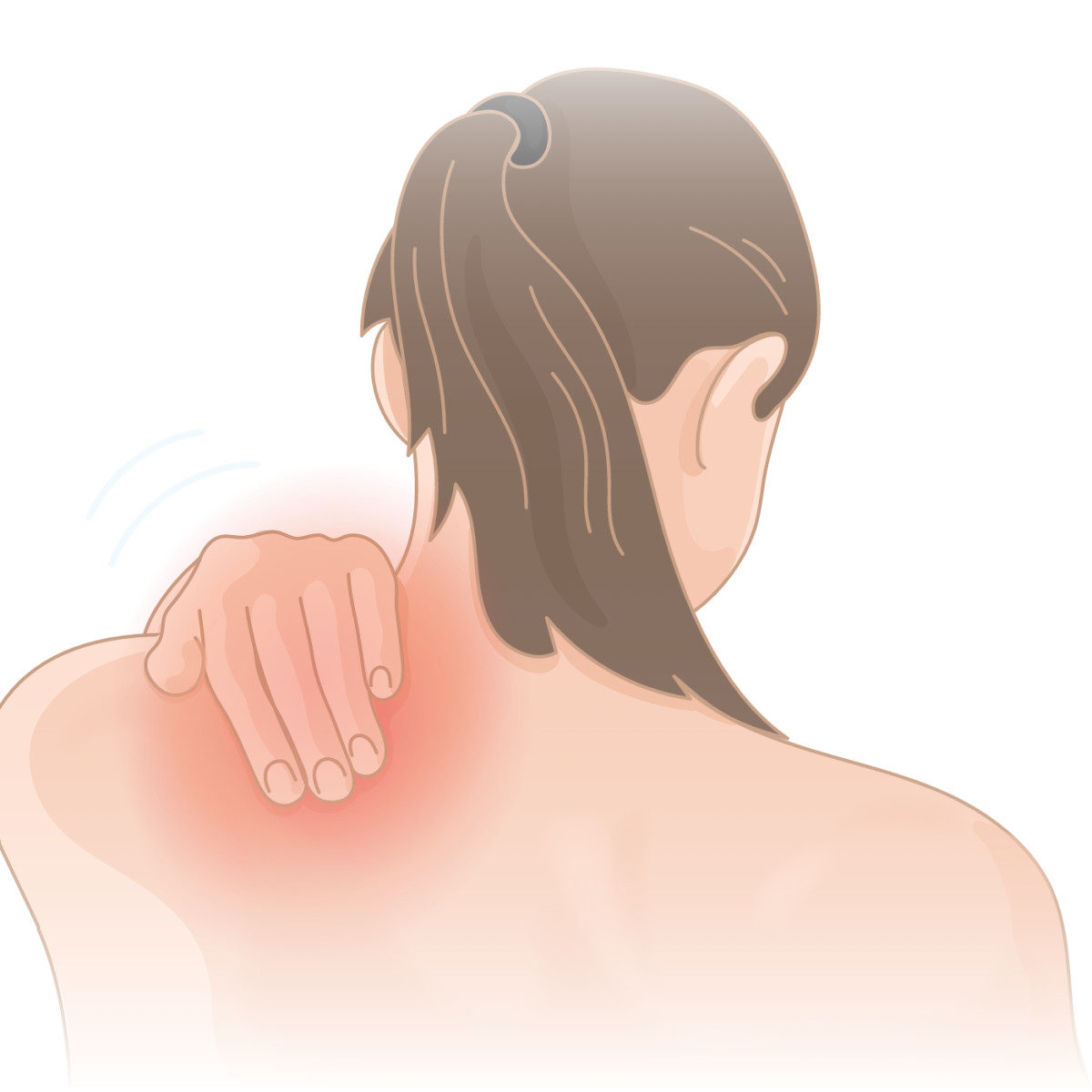What is shoulder and neck discomfort?
Your neck and shoulders include muscles, bones, veins, nerves, and arteries, in addition to many ligaments and other supporting structures. Numerous conditions can cause discomfort in the neck and shoulder.
Some are dangerous (such as cardiovascular disease and major injury), and others aren’t so bad (such as simple strains).
What can cause shoulder and neck pain?
Discomfort located in the neck is usually a sign that something is wrong. Neck pain can originate from many conditions and illnesses and include multiple parts of the neck. Examples of typical conditions triggering neck pain are degenerative disc disease, neck pressure, neck injuries like whiplash, herniated disc, or a pinched nerve. Viruses and other common infections can cause neck pain as well.
The most common cause of shoulder discomfort and neck pain is an injury to the soft tissues, consisting of the muscles, tendons, and ligaments within these structures. Disc herniations that cause pinched nerves and arthritis can also cause neck and shoulder pain.
What else can cause shoulder or neck pain?
- Fractured collarbone: Falling on your arm can trigger your collarbone to break. This is especially typical when people fall off of their bikes or scooters.
- Bursitis: This is where bursae (which provides a cushion for joints and muscles) become swollen, stiff, or painful.
- Heart attacks: Cardiovascular disease can trigger shoulder or neck discomfort, often understood as “referred” pain.
- Damaged shoulder blade: An injury to the shoulder blade can cause pain.
- Rotator cuff injuries: The rotator cuff can be hurt while lifting, when playing sports with a great deal of throwing (like football or baseball), or just with overuse. This can result in discomfort with the movement of the shoulder and can lead to frozen shoulders.
- Whiplash: This can cause injury to the neck and shoulder, usually as a result of a car accident or abrupt acceleration or deceleration. This can likewise trigger muscle convulsions in the neck and shoulder locations.
- Tendonitis: The tendons link the muscles to the bones. With pressure, the tendons can become swollen and trigger discomfort.
What are the risk factors that can lead to shoulder and neck pain?
Risk factors consist of athletic activity, heavy lifting, tossing, moving baggage or other heavy things. Age can also play a role over time.
What are the symptoms and indications of shoulder and neck pain?
- Discomfort: All pain appears sharp, however, pain can likewise be referred to as dull, burning, crampy, shock-like, or stabbing. Discomfort can result in a stiff neck or shoulder and loss of a variety of movements. Headache might result. Each sign’s character is very important to your physician since the particular features can be hints to the cause of your discomfort.
- Weakness: Weakness can be due to extreme pain from muscle or bone movement. The nerves that are around the muscles, however, likewise could be injured. It is essential to differentiate true weakness (muscle or nerve damage) from inability or hesitation to move due to pain or swelling.
- Tingling: If the nerves are pinched or damaged, you might not be able to feel things normally. This might trigger a burning or tingling experience, a loss of feeling, or a transformed sensation similar to having your arm “go to sleep.”
- Coolness: A cool arm or hand recommends that the arteries, veins, or both have been injured or blocked. This might imply that inadequate blood is getting into the arm.
- Color changes: A white or blue tinge to the skin of your arm or shoulder is another indication that the arteries or veins could have been injured. Redness can suggest infection or inflammation. Try to look out for any rashes or bruising.
- Swelling: This might be generalized to the entire arm or may be localized (a fracture or an irritated bursa, for example). Muscle convulsions or tightness may replicate swelling as well. Dislocation can also cause a swollen appearance.
When should I seek treatment for shoulder or neck pain?
If you were in an accident (car or any other type) or your pain or other symptoms start to intensify, call your medical professional, or go to the hospital. They will usually perform tests and scans to see what’s going on under the surface.
For milder cases, there are things you can do at home (see list below) that may be appropriate until your doctor can see you.
Oftentimes, basic injuries will improve overtime and you may be able to take care of it yourself.
If you have serious pain, weakness, or feeling numb/tingling, go to the hospital immediately. Additionally, if you discover a high fever, serious headache, chest pain, shortness of breath, sweatiness, queasiness, or dizziness, or if you develop sudden tingling or weakness, particularly on one side of the body, call 911 immediately.
What professionals treat shoulder and neck discomfort?
Shoulder and neck pain can be treated by a variety of healthcare professionals including internists, orthopedists, neurologists, physiatrists, chiropractors, and physical therapists.
How do healthcare professionals detect shoulder and neck pain?
An extensive history and physical evaluation usually are performed to develop the diagnosis for most injuries. However, your physician may do a series of tests, depending upon your symptoms, the area of your pain, or any other signs you let them know about. The list is comprehensive and might include X-rays, MRI, an electrocardiogram (ECG), blood tests, and CT scans.
- X-rays: These might be done if you have tenderness to touch along the bony locations of your spinal column or shoulder, a history of significant injury, or your doctor thinks you might have a condition associated with your heart or lungs.
- ECG: An electrocardiogram might be prescribed if you also have chest discomfort, shortness of breath, and threat factors for cardiovascular disease (such as hypertension, diabetes, high cholesterol, or tobacco usage).
- Blood tests: These may be carried out if you likewise have chest discomfort, shortness of breath, and are at risk for a heart attack (such as hypertension, diabetes, high cholesterol, or tobacco use) or if your medical professional thinks a hidden disease is the reason for the pain.
- CT scan: This might be carried out when X-rays don’t paint a clear enough picture, or when more detail is needed.
- MRI: An MRI is typically not ordered immediately unless there are specific symptoms that merit it.
Is there anything I can do at home to relieve shoulder and neck pain?
Minor injuries that have just slight discomfort can be treated at the house. If the source of the discomfort and the cause of the pain are unknown, or if symptoms suggest you may have a more serious condition, you ought to call your medical professional while starting standard care measures. Some basic measures include:
- Rest: Take it easy on the injured for the first 2 to 3 days, then gradually reintroduce activity. Resting for too long will actually slow healing.
- Ice: Apply to the injury for 15-20 minutes every hour. Cover the ice pack in a cloth as using ice directly on the skin can harm it.
- Elevation: Elevation of the damaged area above your heart assists the swelling go down. This can also decrease your pain.
- Pain management: Acetaminophen (Tylenol) or ibuprofen (Advil) can help control swelling and pain.
What medical treatments are available for shoulder and neck pain?
If you’re looking for an all-natural solution, physical therapy should be your first stop. A PT can create an all natural treatment plan that will be customized for your exact condition. Physical therapy can achieve long lasting results without painkillers, injections, or surgery that many doctors like to recommend.
If you go to a doctor, their initial recommendation is usually physical therapy. However, talk with your doctor since some conditions require urgent attention.
Is follow-up needed after treatment of shoulder and neck pain?
Timely follow-ups with your doctor or physical therapist will allow you to get better faster. Your physical therapist will typically upgrade your workouts and/or rehabilitation plan so that you continue to get stronger and avoid future injury.
How to avoid shoulder and neck pain?
To avoid injuries, try to focus on what you’re doing, when you’re doing it. Many injuries happen because of an accident or lack of attention. Whether you’re training in the gym, cooking, or doing other chores at home, focus on what you’re doing.
When performing dangerous tasks, ask someone to spot or help out so that you can reduce the likelihood of injury. For example, when climbing up a ladder, have somebody hold the base of the ladder to keep it from moving to either side.
Know your restrictions. Don’t do things where you don’t have the training, skills, tools, or strength to do.
How long can it take to recover from shoulder and neck pain?
Some conditions will get better on their own within a few weeks. Because lots of neck and/or shoulder pain is brought on by sprains and strains, you can expect to recuperate with minimal limitations on your daily life.
However, some conditions require hospitalization, surgical repair, physical therapy, or other rehabilitative measures. Healing may take longer if the injury is serious. Some conditions can be relentless or persistent; thus, you need to have a long term treatment plan that will adjust with you.

